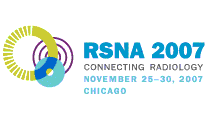
Abstract Archives of the RSNA, 2007
Snehal Desai, Presenter: Nothing to Disclose
Timothy John Seipel MD, Abstract Co-Author: Nothing to Disclose
Wei-Yuan Mai MD, Abstract Co-Author: Nothing to Disclose
Bin Sing Teh MD, Abstract Co-Author: Nothing to Disclose
Arnold C. Dela Paulino MD, Abstract Co-Author: Nothing to Disclose
Whole brain irradiation is essential in the treatment of certain brain tumors. Retrospective studies have revealed recurrences in the subfrontal region above the cribriform plate (CP). These recurrences may be due in part underdosage of the CP region to spare as much of the bilateral eyes. This study was undertaken to evaluate the relationship between age, gender and globe volume above the cribriform plate in children receiving cranial or craniospinal irradiation at one center.
A retrospective review of unenhanced gadolinium-enhanced MRI studies was performed on 60 consecutive children seen in our department. Anteroposterior, equatorial and craniocaudal dimensions of both globes as well as craniocaudal dimension of the CP were measured in each study. The largest diameter for each measurement was used to calculate globe volume and partial volume of glove above the CP. The volume of globe above the CP divided by the volume of the globe was defined as the percent of globe above the cribriform plate (%GACP). Statistical analysis using linear regression and ANOVA was conducted to evaluate the relationship between age, gender and % GACP.
The study included 34 male (56.6%) and 26 female (44.4%) patients with a median age of 6 years (range, 3 months to 18 years). There was a strong linear relationship between age and % GACP (p = 0.005); as the age increased, the %GACP decreased. However there was increased variability and poor fit on linear regression to predict %GACP in relation to age (r2= 0.13). In addition, there was no correlation between gender and %GACP (p= 0.87).
As age increased, the percent of globe above the cribriform plate decreased; however, it was difficult to predict the degree of change in %GACP with age using the linear regression analysis provided. Our next study will incorporate the use of computed tomography in determining the degree of change in volume in relation to age.
Desai, S,
Seipel, T,
Mai, W,
Teh, B,
Paulino, A,
Is There a Relationship between Age and Globe Volume Above the Cribriform Plate?. Radiological Society of North America 2007 Scientific Assembly and Annual Meeting, November 25 - November 30, 2007 ,Chicago IL.
http://archive.rsna.org/2007/6000398.html

